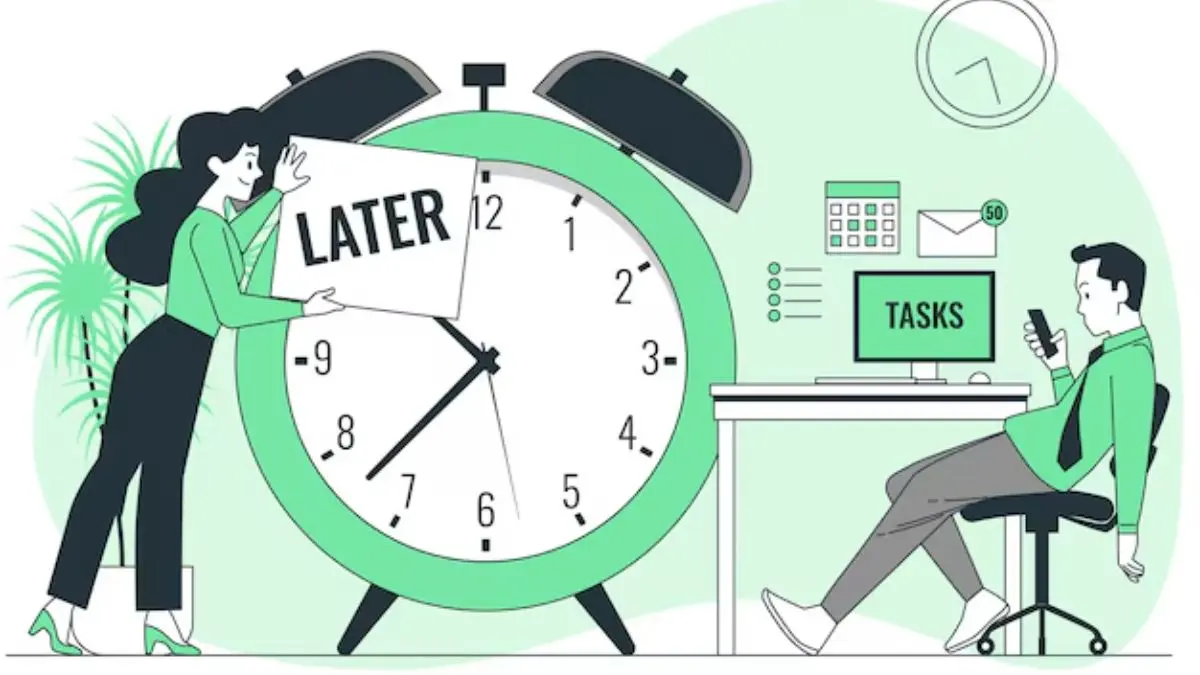Procrastination is something we’ve all battled at one point or another. It’s that lingering decision to put off tasks, even though you know you should get them done. Whether it’s delaying a work project, putting off studying for an exam, or avoiding chores around the house, procrastination can eat away at productivity and cause unnecessary stress. But How to Beat Procrastination? Here’s a detailed guide to help you overcome procrastination, filled with practical strategies, examples, and tables to keep things engaging!
Why Do We Procrastinate?
Before we can tackle procrastination, it’s important to understand why it happens. In most cases, procrastination stems from psychological factors such as:
- Fear of failure: We avoid tasks because we fear we won’t do them well.
- Perfectionism: Wanting to get something “just right” can lead to delays.
- Lack of motivation: If a task doesn’t feel important, we tend to put it off.
- Overwhelm: Large tasks can seem insurmountable, so we avoid them altogether.
Practical Strategies to Beat Procrastination
1. Break Tasks into Smaller Steps
Often, we procrastinate because tasks seem too large or intimidating. The trick is to break them down into manageable chunks. Instead of thinking, “I have to complete this entire project,” focus on “What’s the first step I can take?” This shifts the task from overwhelming to achievable.
Example: If you have a 10-page research paper due, don’t aim to write all 10 pages in one sitting. Break it down: Day 1—Research, Day 2—Outline, Day 3—Write the introduction, and so on.
| Large Task | First Step | Second Step | Third Step |
|---|---|---|---|
| Write a research paper | Conduct research | Create an outline | Write the introduction |
2. Use the Pomodoro Technique
This method involves working for 25 minutes and then taking a 5-minute break. After four cycles, take a longer break of 15-30 minutes. This time management technique helps maintain focus while giving you periodic rest, preventing burnout.
Example: You’re working on a marketing presentation. Set a timer for 25 minutes, focus on building slides, and when the timer goes off, take a quick break. Repeat the process until the task is done.
| Pomodoro Cycle | Work Time | Break Time |
|---|---|---|
| First Cycle | 25 minutes | 5 minutes |
| Second Cycle | 25 minutes | 5 minutes |
| Third Cycle | 25 minutes | 5 minutes |
| Fourth Cycle | 25 minutes | 30 minutes |

3. Prioritize Your Tasks with the Eisenhower Matrix
One of the best ways to beat procrastination is by figuring out what needs your attention first. The Eisenhower Matrix divides tasks into four categories:
- Urgent and Important: Do it immediately.
- Important but Not Urgent: Schedule it for later.
- Urgent but Not Important: Delegate it if possible.
- Not Urgent and Not Important: Eliminate it.
Example: You’re working on several tasks at work, but you’re unsure which to tackle first. Use the matrix to categorize them.
| Task | Category | Action |
|---|---|---|
| Finalize project report | Urgent and Important | Do it now |
| Plan next month’s budget | Important but Not Urgent | Schedule it |
| Respond to emails | Urgent but Not Important | Delegate it |
| Scroll through social media | Not Urgent and Not Important | Eliminate it |
4. Set Clear Deadlines
Tasks without deadlines often get pushed aside. Even if a deadline isn’t required, set one for yourself. This creates a sense of urgency and ensures the task stays on your radar.
Example: You need to organize your closet, but it keeps getting delayed. Set a deadline of “By Sunday evening” and break the task into parts: Monday—sort shoes, Tuesday—organize clothes, and so on.
5. Eliminate Distractions
Procrastination often happens when we’re distracted by other things—like social media, notifications, or even a cluttered workspace. Identify your distractions and remove them when it’s time to work.
Example: If you find yourself constantly checking your phone while working, put it on airplane mode or keep it in another room.
| Distraction | How to Eliminate It |
|---|---|
| Phone notifications | Turn on airplane mode |
| Noisy environment | Use noise-canceling headphones |
| Social media | Use website blockers like “StayFocusd” |
6. Reward Yourself
Giving yourself rewards for completing tasks can be a great motivator. Whether it’s taking a break, having a snack, or doing something you enjoy, rewarding yourself creates positive reinforcement.
Example: After completing 3 hours of studying, reward yourself with an episode of your favorite show or a walk outside.
| Task Completed | Reward |
|---|---|
| Studied for 3 hours | Watch an episode of a show |
| Finished presentation | Take a walk outside |
| Cleaned the house | Enjoy a coffee break |

Procrastination Traps to Avoid
Even with the best intentions, it’s easy to fall back into procrastination habits. Here are some common traps and how to avoid them:
- Perfectionism: Understand that done is better than perfect. You can always improve a task later.
- Overplanning: Planning is important, but overplanning can become a form of procrastination. Focus on action.
- Waiting for the “right mood”: If you wait for inspiration or the perfect moment, you’ll likely keep waiting. Start, and motivation will follow.
Conclusion
Procrastination may seem like an insurmountable challenge, but with the right strategies, it’s entirely possible to overcome it. Start small by breaking tasks into manageable steps, eliminate distractions, use tools like the Pomodoro technique, and prioritize effectively using the Eisenhower Matrix. Remember to reward yourself for completing tasks, and don’t fall into the trap of perfectionism or overplanning. With these practical steps, you can turn procrastination into productivity!
Also Read: How to Exercise right thinking



